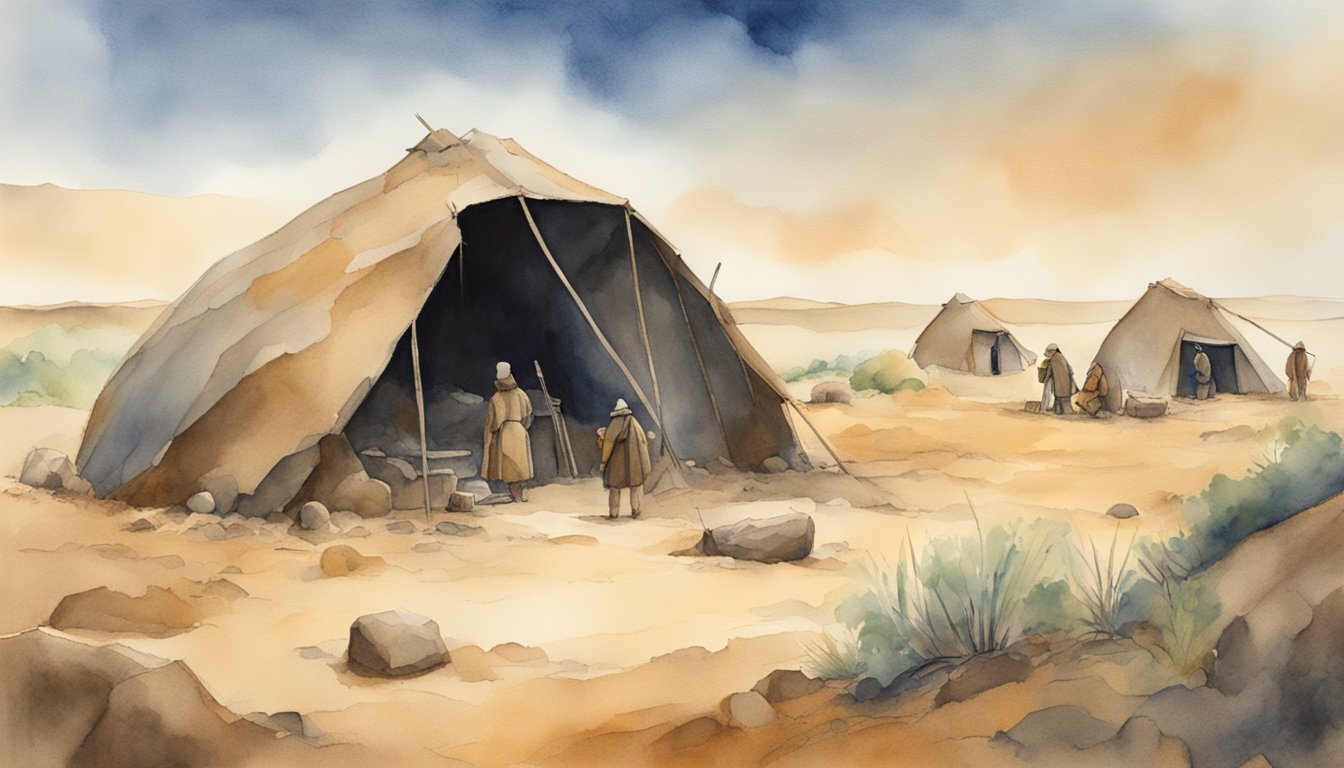Origins of Homo Sapiens
Homo sapiens, the species to which all modern human beings belong, has a rich evolutionary history marked by significant milestones—ranging from crucial genetic mutations to expansive migrations. This section will outline the development and global dispersal of Homo sapiens.
Evolutionary Timeline
Homo sapiens evolved from their hominid ancestors, branching off from primates millions of years ago. The genus Homo has included several other species, of which humans are the sole survivors.
- Australopithecus afarensis: Appeared around 3.85-2.95 million years ago.
- Homo habilis: Emerged approximately 2.4-1.4 million years ago.
- Homo erectus: Thrived roughly 1.9 million years to 140,000 years ago.
- Neanderthals: Coexisted with modern humans until about 40,000 years ago.
- Denisovans: Interbred with Homo sapiens, as recent DNA evidence suggests.
The evolutionary path was complex, with several species of the genus Homo existing concurrently before Homo sapiens became predominant.
Genetic Evidence
Genetic analysis has been pivotal in understanding human evolution. The common ancestor of chimpanzees, gorillas, bonobos, and early hominins is believed to have lived between 6 to 7 million years ago. Homo sapiens’ DNA contains traces of this lineage, including genes from Neanderthals and Denisovans, which points to cross-breeding events in the ancient past.
Migration Out of Africa
- Around 300,000 years ago: Homo sapiens are believed to have arisen in Africa.
- Between 70,000-100,000 years ago: Groups started migrating out of Africa.
These migrations led to Homo sapiens populating Asia, Europe, and eventually Australia. The journey was shaped by nature and the environment, with water sources often guiding paths.
Distinguishing Characteristics
Homo sapiens are defined by various distinct characteristics:
- Brain Size: Larger brains compared to predecessors.
- Tool Use: Sophisticated tools for hunting and gathering.
- Language: Development of complex language systems.
- Art and Culture: Ability to create art and engage in cultural practices.
These traits set apart modern humans from earlier species and were instrumental in their survival and dominance of the planet.
Evolutionary milestones are pieced together through fossil discoveries and advances in DNA analysis, offering a window into the past. The migrations are well-documented through genetic markers and archaeological findings across continents such as Asia and Europe, and studies of the first Australopithecus fossils provide insights into our early ancestors. These findings support the theory of evolution, first popularized by Charles Darwin in the 19th century. His work laid the foundation for modern evolutionary biology, and learning Charles Darwin interesting facts can further illuminate how his observations shaped scientific thought. From the Galápagos finches to the concept of natural selection, his contributions continue to influence our understanding of human origins.
Development of Human Society

The foundation of human society was laid through a robust progression in cultural evolution, technological innovation in tool making, the advent of language and communication, and the domestication of plants and animals. These pillars fostered the complex societies we see today.
Cultural Evolution
The evolution of culture among humans has been a profound force, shaping societies and accelerating human progress. Archaeologists have pieced together this prehistoric puzzle from various archaeological finds that demonstrate how culture allowed knowledge to be passed down from generation to generation, leading to advances in technology and social structures. The development of complex rituals and art are testament to this cultural expansion.
Tool Making and Technology
From simple stone tools to sophisticated weapons and artifacts, tool making has been integral to human development. Tools increased the efficiency of activities such as hunting and gathering, and were pivotal in the establishment of agriculture. Scientists suggest that the level of complexity observed in the tools is linked to the growth of human brains, highlighting the deep connection between technological advancement and biological evolution.
Language and Communication
The emergence of language revolutionized human society, providing a means to convey complex ideas, emotions, and instructions. It has been pivotal for the coordination in large population groups and for sharing knowledge across distances. Evidence suggests the capacity for language developed around 50,000 years ago, which facilitated the creation of a rich tapestry of human culture and the accumulation of knowledge akin to the Library of Alexandria of its time.
Domestication of Plants and Animals
Agriculture marks a significant shift in how human societies functioned. The transition from nomadic to settled life centered around the domestication of plants and animals, which yielded a consistent food supply. This stability allowed populations to grow, and gave rise to the first civilizations. Archaeological findings show evidence of early plant cultivation and animal herding, which have been the bedrock of societal development.

